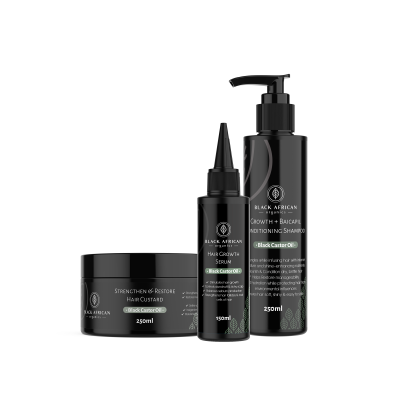Here are few rules of thumb to help you get started in your kids’ haircare journey!
One of the questions we are most commonly asked at Black African Organics is what products or haircare routines we recommend for kids. Deciding on a hair regimen for your child can be scary! Many parents are afraid of neglecting or somehow ruining the health of their children’s hair. The task can seem most intimidating to parents who don’t have natural hair themselves or if their child’s hair is significantly different from their own.
So, where do you start?
A child’s haircare routine doesn’t have to take all your time or money- it’s a matter of good ingredients, a good regimen, and consistency. And once you establish a routine that works for you and your child, you’ll be able to relax!
Basic Rules..
1.UNDERSTAND YOUR CHILD’S TEXTURE AND HAIR TYPE:
Determining your child’s hair texture/ type will save you plenty of time and money. Every hair product is not made equal nor is it made for every kind of hair.
Below is a very basic hair chart displaying hair texture from 1 (bone straight) to 4c (extremely coiled). To break it down, hair texture one is normally associated with those of Asian nationality. 2c-3c are more normally associated with individuals who identify as mixed nationality. 4a-4c are what you would classify as thicker and more “unruly” by society standards.
2. CLEANSING
No matter what you’ve heard, you DO need to shampoo your child’s natural hair. Product residue builds up over time and can block pores and moisture from entering hair follicles. This results in dry hair. Also, don’t forget that your child is a child- their hair will get dirty while they’re playing. However, shampooing more than once a week is likely to dry out natural hair as well, since it strips out natural oils. Pick a gentle but cleansing shampoo. Wash your child’s hair every week.
3. MOISTURIZING:
Your child’s hair probably accumulates more wear and tear than yours does, whether they’re learning to swim, playing, running around and sweating, or playing with their own hair. Since kids are more vulnerable to dry and damaged hair, take preventative measures. At least several times a week, moisturize your child’s hair with water, moisturizer, and seal it in with oil. Pay attention to those ends! They’ll dry out first.
4. DETANGLING:
A very painful task for both you and your child. But it
doesn’t have to be! Here’s what you need to know.
- Don’t avoid detangling. If you don’t detangle, their hair will become more and more unmanageable as well as prone to breakage and split ends.
- Use a wide-toothed comb, and don’t pull. Start near the ends (always combing down), and gently work your way up to comb down the full length. With patience and this method, you should be able to detangle any knots rather than yanking them out.
- Detangle in sections so you don’t miss any parts.
- Never detangle dry! Hair is more likely to break when it’s dry. Whenever possible, detangle when your child’s hair is damp (after a wash) or full of sprayed generously with a detangling spray.
5. TRIMMING:
Split ends and single strand knots are bad for anyone’s hair, but since they increase breakage and make detangling more difficult, they can be especially painful for little ones. So do regular trims. You can do them yourself, and they can be minimal- just trim off the dead ends, keeping your child’s hair healthy.
6. NIGHT TIME CARE:
Have your child sleep on a satin pillowcase to reduce
friction and breakage overnight. This is especially important as their hair grows
bigger/longer.
A daily haircare tip for Afros: Twist the fro at night to avoid tangles. Spritz lightly with the detangling hair spray and rub sections of the hair with conditioner or a moisturizer.
7. PROTECTIVE STYLES ARE BAE:
Any hairstyle that protects the ends of your hair from breaking and over exposure to harsh elements is considered a protective style. Cornrows, braids, twists and the like are invaluable at growing out your child’s hair. If you are styling hair into a high puff or ponytail, then be mindful of the tension and pulling that these styles put on their edges. Try to switch up the styles to give the edges of the hair a break.
8. SELF LOVE:
My number one piece of advice is to teach your child to love
their hair. In a world where natural hair can be seen as different, weird, or
undesirable, you are an essential line of defense. Never criticize or imply
that there’s something wrong with their hair, but instead treat your child’s
hair (and your own!) with love, care, and pride. They’ll learn from your
example!
We hope that these guidelines can help you get started on creating a specific hair regimen for your little one, as everyone’s hair is a little different.
A SAMPLE REGIMEN:
- Sunday: Shampoo, condition, deep
condition, LOC method, protective style - Monday: Water/ Detangler spray and Moisturizer
- Tuesday: Water/ Detangler spray and Moisturizer
- Wednesday: Water/ Detangler spray and Moisturizer
- Thursday: Water/ Detangler spray and
moisturize - Friday: Water/ Detangler spray and Moisturize
- Saturday: Water/ Detangler spray and Moisturize
Now, all of this knowledge does you no good if you aren’t
consistent. With most parents, finding the time to do all of these steps is the
main reason why hair doesn’t get the proper TLC that it needs. But, if you want
your child’s hair to grow and be healthy, then you will have to MAKE time! Don’t
give up! Your child, and their hair, will thank you for it.
What’s your child’s daily, weekly or even monthly hair
regimen?





